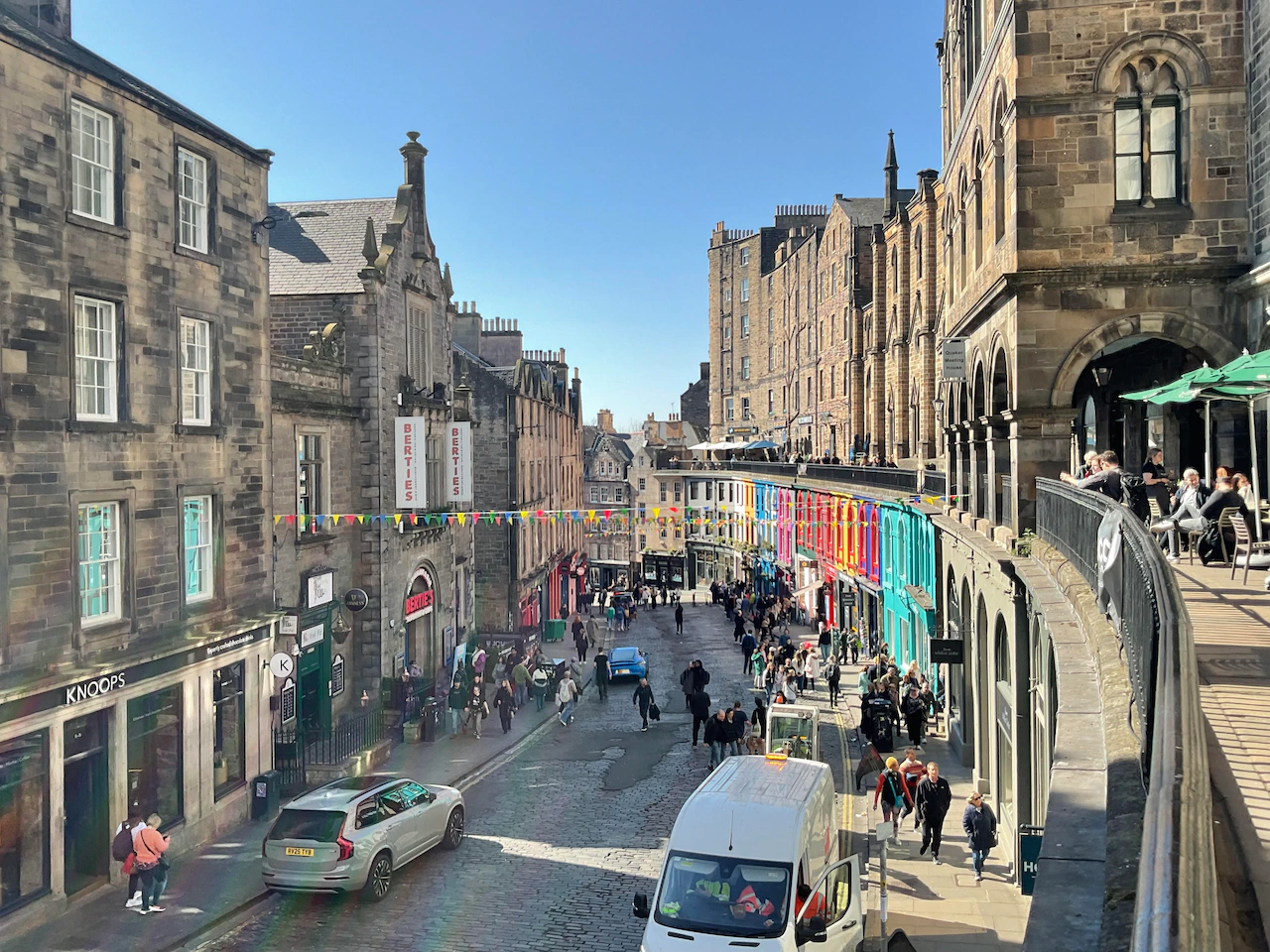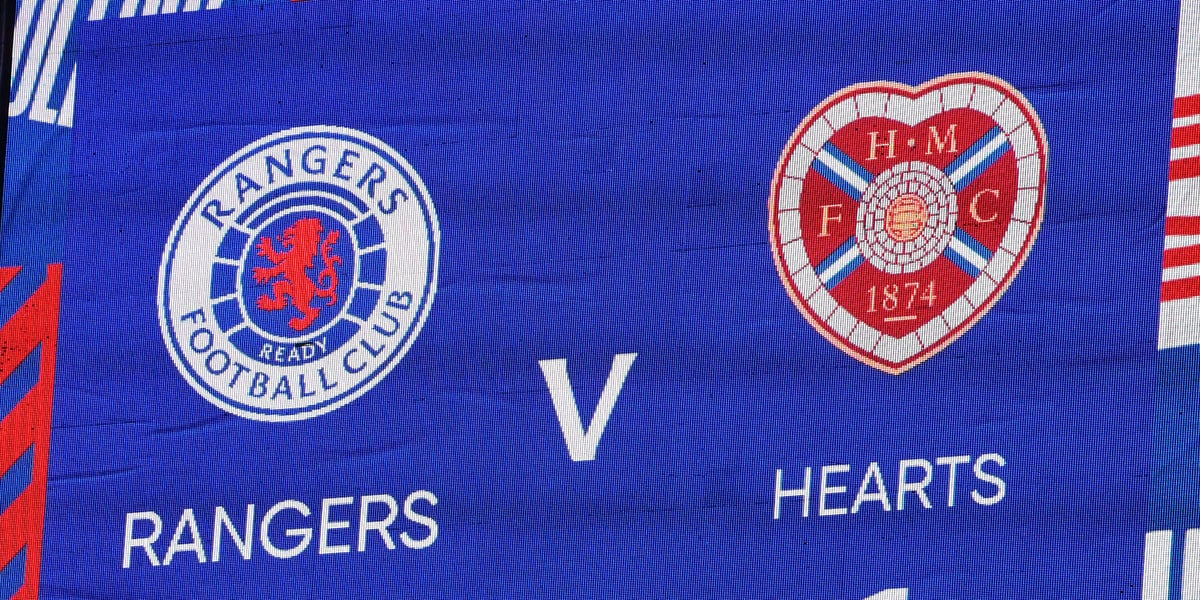
EDINBURGH, Scotland — Have you ever been on vacation somewhere and thought to yourself, “I could live here?”
My wife and I have, too, and after a trip to Scotland in 2024 we took a step toward making “We live here” happen as we approach retirement.
The reasons are plentiful, including cool temperatures, plenty of fresh water and very low violent crime rates. Also, it’s Scotland — home to ancestors on both sides of our families, absolutely beautiful landscapes, friendly and inquisitive people, whisky, Highland coos and a great base to explore all of Europe and beyond.
We decided our next trip to Scotland would be a vacation/location hunt.
In the time between our initial visit, which was five nights in Glasgow with day trips to Edinburgh and nearby towns and villages, my wife researched Scottish home values, towns, cost of living and other factors that would play in to the location of choice.
(Note: Edinburgh, the Scottish capital, is a 50-minute train ride from Glasgow, Scotland’s most populous city.)
We decided for our next trip — in late March 2025 — to use Edinburgh as our home base, with plans to visit North Berwick, Haddington and Tranent, all east of Edinburgh, and Stirling, Falkirk and Bridge of Allan to the northwest of Edinburgh. All the towns were no more than a 75-minute drive from Edinburgh and all are reachable via train.
The reasons we selected these specific towns included housing within our budget, safety and “peace and quiet,” which to us translates as far enough from city bustle but also close enough to city bustle.
Exploring Edinburgh
Edinburgh (Ed-in-burra) is layered thick with history. Digging through each layer is sure to lead to finding something remarkable.
It’s the priciest place we considered. By New York City standards, it’s cheap. But if you’re shopping with Midwest money, this European capital can be pricey.
The city features two distinct areas: Old Town and New Town, which are conveniently split by train tracks and the massive Waverley Train Station.
Old Town, home to Edinburgh Castle, the Royal Mile, Victoria Street and many gorgeous pubs, sits south and uphill from Waverley.
It’s about a half-mile walk to the castle from the train station, but be warned — it’s a steep climb whether using sidewalks or stairs. Case in point: the Playfair Steps. The first step up is accessed from Princes Street near the train station and the National Galleries of Scotland and the Royal Scottish Academy. After 84 more steps up, you’ll find yourself on Market Street and if like me, in need of a rest.
Uber or taxis are available for trips to the castle, the zenith of Old Town, but note that when we visited, road construction forced us to be dropped off a couple hundred yards from the building.
The castle, which sits on an extinct volcano, is remarkable. According to EdinburghCastle.scot, people of the Iron Age were the first to take advantage of its strategic location.
The castle first became the home for kings and queens in the 11th century, and the website notes that Edinburgh Castle is the most besieged place in Britain.
Massive statues of William Wallace (Braveheart) and Robert the Bruce guard the entrance, welcoming visitors for tours, self-guided and guided.
The views are spectacular and it’s hard not to get lost in thoughts and time about sharing the same space where kings, queens, rebels, soldiers, prisoners and people from around the world have tread for more than 1,000 years.
Other highlights included the Royal Mile, so-called because it stretches from Edinburgh Castle to the Palace of Holyrood House. It’s downhill (if you start at the castle) and mostly free of cars and loaded with shops, where you can find cheap (fake) and expensive (real) tartan, whisky, shortbread and souvenirs, cheesy or not. There are pubs, cafes and a lot of people. Early in the day or late afternoon is an ideal time to do the walk if you’re looking to avoid crowds.
Victoria Street: Google “Victoria Street Edinburgh” and you’ll likely see claims that it is the most photographed street in Edinburgh, or in Scotland, or in the world.
It’s worthy of all claims.
The Old Town thoroughfare connects the Royal Mile to Grassmarket, which travel writer Rick Steves refers to as a “people-friendly piazza.”
Victoria Street is steep, curving and each side of its cobblestone surface is lined with colorful shops, cafes, restaurants and more. Find your way to the Victoria Street terrace, grab a pint and sit down for an enjoyable people-watching experience as visitors jostle for the best angle to snap a photo.
To the north of the Waverley Train Station is Edinburgh’s New Town, which was built between 1767 and the late 1820s to accommodate the city’s growing population, and is still considered “new.”
It’s a tremendous feat of city planning with photo ops galore, though it features much less tourist activity.
We like to stay away from busy areas when we travel and my wife found an ideal Airbnb on Dundas Street in New Town, about seven-tenths of a mile from Waverley. Our flat, hosted by the mother-daughter duo of Kerrey Mitchell and Jessica Mitchell, was elegant, modern and classic, and best of all, comfortable and welcoming.
To us, New Town offered a chance to take in Edinburgh without having to take in other tourists. We could walk to pubs, restaurants, grocery stores and the different neighborhoods that make up New Town.
Some favorite spots include the Wally Dug, a small pub on Northumberland Street that was conveniently (or inconveniently) less than 300 feet from our flat. The Wally Dug (dug is a Scottish word for dog) welcomes dogs, of course, and when we there was bustling with locals. If it’s too crowded, take your drink out the door, down some steps and into a small stone-walled room under Northumberland Street.
Need a break from traditional Scottish fare? Try the Wee Buddha on Jamaica Street. Great food, great vibes and it too welcomes dugs. (Everything is better with a pooch.) Try the ka pow.
Little Capo, a restaurant on Howe Street, had only been open for a few months before our visit but was already a hot spot. Little Capo calls itself “Italianish” and offered a dreamy pappardelle with ox cheek dish.
Cooking at home? Something Fishy, a fishmonger on Broughton Street, has the what’s-what of local catches and amazing smoked salmon.
A couple doors down from Something Fishy is The Broughton, where I had a pint and a wonderful conversation with a Scotsman, who, like me, has a great appreciation for The Pretenders, and who admitted to having a lifelong crush on Chrissie Hynde. Understandable.
We relayed to many of the Scots we met during our week in Edinburgh of our proposed relocation, and in turn received tips, recommendations and directions.
Related: Kilt by association (or how to dress like a Scot and impress your wife)
Note to retirees: This is a compact city, but it’s also very hilly. We witnessed a woman in her 50s help a woman in her 70s up the hill in front of our rental. The older woman clung to a light pole for support while waiting for a light to change to cross the street. If uphill hiking is not your thing, you’d likely depend on ride-shares. Parking is scarce. We used JustPark, an online service that serves like an Airbnb for cars.
Tranent, Haddington and North Berwick
We had rented a car at the airport, and our first recon drive took us east to Tranent and Haddington and then north to North Berwick.
Taking the A1 highway out of Edinburgh, Tranent is about 11 miles due east. The town of around 12,000 did not come highly recommended by our new Scottish friends and to us warranted just a drive through, as it appeared tired and distressed.
Eight miles to the east of Tranent is Haddington, which earned a second visit. The town of 10,000 got good reviews from our tipsters and rightfully so.
It was a Sunday, Mother’s Day in the United Kingdom, and the small town was buzzing with activity. We returned on a weekday at lunchtime, and the streets again were alive. Kids on lunch break from school swarmed the sidewalks and filled the sandwich shops, restaurants were busy, and it felt welcoming. Haddington made our “revisit for relocation” list.
Note to retirees: Tranent is affordable, about 2 miles from the sea and 6 miles to the nearest rail station, Longniddry. The train ride to the center of Edinburgh is about 20 minutes from Longniddry. Haddington is about 6 miles from the sea and is also about 6 from the Longniddry train station.
Next was North Berwick, about 9 miles north of Haddington on the North Sea. North Berwick this summer hosted the Scottish Open golf tournament, a qualifier for the British Open. Our drive into town took us past what I think of as a traditional Scottish golf course. This was the first I’d seen in person, and it was strange to see folks swinging away on a course with no trees and sand bunkers strategically placed along the fairway from tee to hole, and not just around the green. One foursome patiently waited for us to drive by before they could safely cross the road to resume their round.
North Berwick is beautiful, and it feels like a resort town. North Berwick Harbour is flanked by beaches and features restaurants, a pier, the Scottish Seabird Centre and more. The harbor also serves as a ferry terminal for a boat that connects North Berwick with Anstruther across the Firth of Forth. The harbor was slammed when we got there, and parking was at a premium. Unable to find a space, we stopped at a Lidl grocery store nearby, got some supplies and took a stroll around town. We felt we “could” live here, but alas, it’s too expensive for us. But it’s worth a visit.
Note to retirees: If you’re a golfer and can afford it, North Berwick is near perfect. It has its own train station, linking you to Edinburgh. The ferry runs during the warmer months. Anstruther in Fife is part of Scotland’s East Neuk, which is dotted with charming fishing villages.
Falkirk, Stirling and Bridge of Allan
Our next drive took us west of Edinburgh to the “gateway to the Highlands.”
Falkirk is 26 miles west of Edinburgh and is the site of one of the major battles in the Scottish war of independence. The battle in July 1298 resulted in an English victory and led to the resignation of William Wallace as the Guardian of Scotland, according to brittanica.com
Falkirk is also home to the Kelpies, a pair of massive steel horse heads, each standing more than 100 feet high along a canal. The duo is visible from the highway driving into town. Falkirk also boasts the Falkirk Wheel, a mechanical marvel that lifts ships 80 feet between canals.
Stirling, 14 miles northwest of Falkirk, can brag of a Scottish victory in the war of independence sites. Less than a year before the Scots’ defeat at Falkirk, an army led by William Wallace romped the English at Stirling Bridge. The Wallace Monument outside of the town center offers the view Wallace had of the battlefield.
Ah, Bridge of Allan. This town of 6,600 a few miles north of Stirling won our hearts. It’s quiet, but with just enough of the amenities we’re looking for and surrounded with beauty.
Bridge of Allan recently was named the No. 1 best place to live in Scotland by Garrington Property Finders, based on cost, quality of life and natural beauty. Garrington is a real estate consulting firm in the U.K.
Bridge of Allan was a must-stop-and-get-out. Just the name of a popular cafe was reason enough. It was at the Wee Timorous Beastie where we had the best coffee and scones of the trip.
More details on Bridge of Allan, or Bofa, are coming in future editions as we head back for a few nights this fall.
These three towns are nearly equidistant from Glasgow and Edinburgh. Glasgow is less than an hour away from Bofa via car or train, and Edinburgh is no more than 75 minutes via streets or rail.
Note to retirees: There’s a train station in Bofa, a bonus. It’s also just south of Dunblane, which Garrington named the second best place to live in Scotland. It’s also near the University of Stirling, a school of about 14,000, lending a wee bit of college atmosphere.
So, what did my wife and I gain from our drives into the suburbs and countryside of Edinburgh and Edinburgh itself?
We were able to lay eyes on towns that we had only read about or seen on screens.
We listened to residents, perhaps the most invaluable asset in our search.
We learned what to see and do and what to avoid.
We learned that Scotch is of course delicious and readily available. I could have sworn there was a drinking fountain in an Edinburgh park spitting out the nectar but I was unable to confirm.
Most importantly, the Scots we talked to made it clear we’d be welcome.
Getting to Edinburgh
Our most recent trip to Scotland was in late March 2025 and we were scheduled to fly Aer Lingus nonstop from Cleveland to Dublin with a 90-minute layover before a 55-minute flight to Edinburgh. However, our flight from Cleveland was delayed nearly two hours and we missed our connection in Dublin. After getting off our plane in Dublin, no sooner had we turned the corner to head to the “Connections” area of the concourse, when an Aer Lingus employee approached us to ask our names, where we were headed and where we were coming from. The Aer Lingus desk had already found us seats on the next flight to Edinburgh and 45 minutes later we were flying over the Irish Sea. Note: The flight from Dublin to Edinburgh entailed a bus ride from the terminal to the tarmac where our plane, an ATR 72-600 turboprop, awaited. Up the steps and off we flew to Edinburgh, where after landing it was down the steps and onto a bus for another bus ride, this one to the terminal.
Getting to Edinburgh II
Savor a more easygoing, relaxed path to Edinburgh? Fly from Cleveland to Dublin and hop on a bus (coach) at DUB to Belfast, just 90 minutes away. Figure on paying $20 per person. No passport needed for entry into Northern Ireland.
Belfast is a marvelous city, one which we found more embracing than Dublin. The difference in accents is remarkable seeing as how close the two capitals are to each other. Spend a night or two in Belfast and get on a bus to cross the Irish Sea to Scotland. The bus leaves from a terminal in Belfast and drives onto a huge ferry. Once on the ferry, bus passengers are free to head to the cafeteria, pub or other areas to relax during the trip across the water. The bus then exits the ferry for a drive to Glasgow. Belfast to Glasgow this way takes 51/2 hours and costs about $126 per person for a round-trip ticket. From Glasgow, it’s a 50-minute train ride to Edinburgh.
Travel tips from a Scot
Kerrey Mitchell, co-host of our Airbnb in Edinburgh, offered suggestions and simple tips for Americans traveling to Scotland.
Tipping is a custom over here just like in the U.S., but normally between 10 – 15 %.
Not all establishments will take American Express, or cash as a payment.
Pack for four seasons, you could have beautiful sunshine and heavy hailstones then cloud and rain all in the same day, so remember a rain jacket.
Don’t just stick to the major cities, the countryside is beautiful. It most absolutely is.



